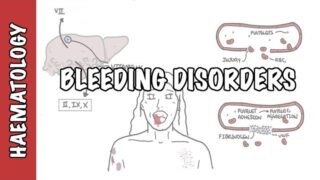von Willebrand disease – Platelet adhesion and aggregation
WHAT IS VON WILLEBRAND DISEASE? von Willebrand disease is the most common hereditary coagulation disorder. It arises from either qualitative or quantitative deficiency of von Willebrand factor, which is a protein that is required for platelet adhesion. There are 4 different types. Type 1 is the most common type. It is an Autosomal Dominant disorder. It […]
von Willebrand disease – Platelet adhesion and aggregation
Other Videos You Might Like:
Subscribe
Login
0 Comments
Newest




